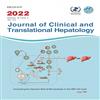
|
-
A Spotlight on Progress and Pitfalls in NAFLD/MAFLD Studies, 2022
-
Nonalcoholic fatty liver disease (NAFLD) is now the leading etiology of chronic hepatitis in the Western world and the only one for which global prevalence is steadily rising over time. In the last years, there have been substantial advances in our understanding of the epidemiology, the (non-invasive) diagnostic methods (including omics technologies), the natural history and the major risk factors for advanced liver disease in NAFLD, including genetic variants and the gut microbiota. Promising results have also arisen from drugs targeting metabolic pathways involved in the progression of liver damage. Recently, international experts also proposed redefining NAFLD as metabolic dysfunction-associated fatty liver disease (MAFLD), but the impact of this name change on risk prediction of both hepatic and extra-hepatic outcomes is not known.
|